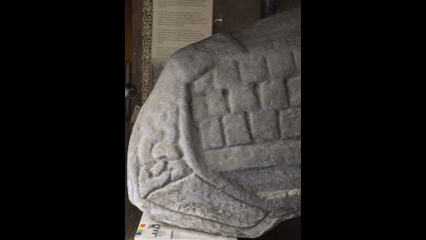MSc Heritage Visualisation School of Innovation & Technology
Yilin Qian

Hello, I’m Yilin. I am a postgraduate student in Heritage Visualisation with a strong passion for cultural heritage, art, and digital expression. I am always eager to connect the past with the present through research and creativity. My background spans academia, creative practice, and project work, which allows me to move fluidly across different fields and transform ideas into tangible outcomes.
Throughout my studies and professional experiences, I have developed skills in teamwork, project organization, and content creation, while gradually shaping my research interests in the digital translation and sustainable use of cultural heritage. I believe that meaningful research and creativity should not remain only in books or galleries, but should come alive through public engagement and interaction.At present, I am exploring how writing, research, and creative projects can offer new ways for people to encounter and understand culture and art.

The Transcendent Roundtable: Queens in Digital Dialogue
My project was inspired by a question: why do historical narratives so often marginalize powerful women? Take these two figures as examples. Empress Nara, whose image has been rewritten in many ways, is remembered as a deposed empress. And Caroline of Ansbach, praised and celebrated as the beloved wife of George II. Both lived in the eighteenth century and played important political and cultural roles. Yet in many traditional accounts and visual representations, their influence has been either diminished or oversimplified.
I noticed that there is a lack of cross-cultural, critical digital reconstructions that could reflect the true positions and significance of these women. That is the starting point of my project, and through it, I hope to challenge the gender bias that has long existed in both historical and digital media.
To achieve this, I used tools such as artificial intelligence, 3D modeling, and virtual reality. My process began with collecting archival materials and portraits, and then experimenting with AI to repair and reconstruct the images of these historical figures. Finally, I built an interactive database on the Framer platform, combining traditional historical narratives with digital visualizations. This approach not only allows viewers to explore the lives of these two queens in greater depth and from different perspectives, but also encourages us to think critically about how digital technologies can challenge and even reshape gender roles.
Exploring the Mysterious Island of Sanxingdui
Develop a Sanxingdui-themed online digital exploration platform using Unity. Through 3D interactive games, 2D mini-games, and artefact data collection, establish diverse exploration modes to comprehensively discover Sanxingdui culture and relics. This highly engaging platform delivers educational content and immersive experiences.
hush-hush hogbacks: exploring govan’s medieval monuments through interactive visualisation
Not much can be said with certainty about the hogback. They are early-medieval monuments found across northern England and southern Scotland, with the largest being found here, in Govan, Glasgow. But why were they made? By whom? What do they represent? Supposedly they are of Scandinavian heritage, yet there are no examples in Scandinavia; presumably they are funerary monuments but without human remains; they are carefully designed yet of unclear archetype. With no definite answers, not only were these puzzles intriguing to the Govan Pebbles team, but they also highlighted the challenge of conveying archaeological uncertainty to the public.
We created an interactive visualisation in Unity to address these issues, where we introduced the hogbacks and presented three theories of what they might represent, employing a mixed-media approach of 3D models, videos, text, and audio. The user is asked to employ critical thinking to choose between these, illustrating the open-ended nature of archaeological research. The visualisation finishes with a video discussion of what this uncertainty means for archaeology at Govan and beyond and therefore, we simultaneously address the fascination of the stones and the deeper question of what it means to ‘know’ in archaeology.






















